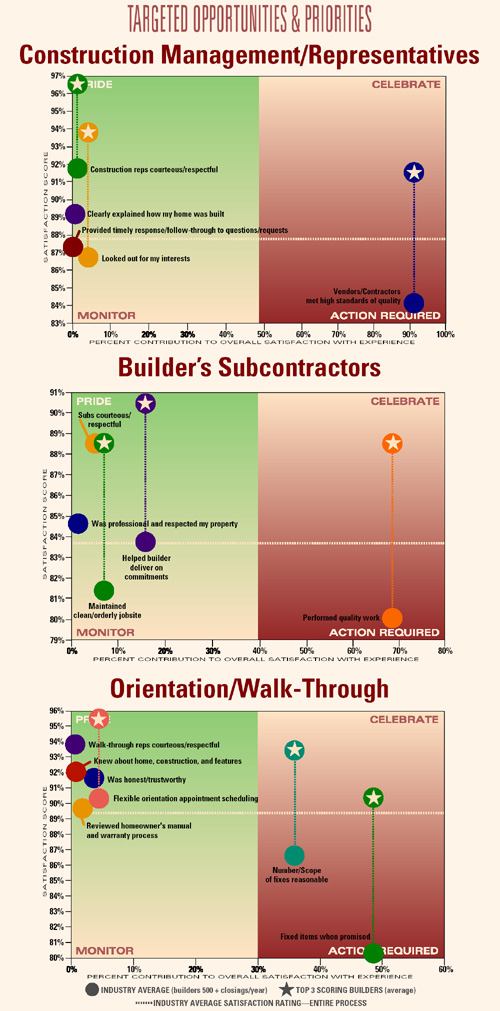AS THE HOME BUYER IS RACING through the design and financing phases of the home buying ride, the construction phase has simultaneously started in earnest. Of all the phases of home buying, this is the part where buyers say they feel they have the least understanding and control. Not being construction savvy, most buyers are looking for signs that the construction team appointed by the builder can be trusted to use eagle-eye attention to design, detail, and quality in order to build them their dream home. They are anxious to confirm that their trust has not been misplaced; that the building team will live up to the builder’s promises; and that they chose the right builder.
Addressing those anxieties begins by appreciating how the buyer’s objectives contrast with the builder’s objectives.
The Traditional Builder‘s Objectives
The Buyer’s Objectives
Whereas the objectives are mostly concerned with process and cost efficiencies, the buyer’s objectives are all about dream fulfillment, emotional expectations, and managed anxieties. Consequently, builders can no longer expect to delight their customers by simply building a high-quality home. It’s expected. Builders must go above and beyond.
The bottom line is that builders cannot delight their buyers by just meeting their own traditional objectives. Delight comes from providing those extraordinary construction experiences or extra planned events that happen when the builder consciously arranges to totally surprise the buyer and elicit a positive emotional response.
Systematically Superior “Unconditional trust” can only be achieved through consistent delivery of the goal to provide each buyer with an extraordinary purchase and ownership experience. Nothing should be left to chance; and every player on the team who touches the buyer in the buying experience needs to be clear about what expectations to set.
That requires builders to establish and follow a systematic process for setting and managing realistic buyer expectations. Every member of the sales, design, service, and construction teams should make the same promises and they should know what they realistically cannot promise. Since an “awesome” or “delightful” experience is defined as one in which the buyer’s expectations are exceeded, builders must be as systematic in setting realistic expectations (that can be beat) as they are in pushing for performance excellence.
One tactic builders might use to rethink their approach with buyers is to forget about the operational procedures they have spent years developing and temporarily cast aside the drive for production efficiency and obsession with schedules. Instead, look at the situation from a new perspective: Pretend the buyer is your mom. What kind of experience do you think she would like to have during this construction phase?
What can be done to provide an experience that impresses and delights buyers? Here are some planned steps that will enhance the overall construction experience for home buyers:
While extraordinary touch points (ETPs) are designed to exceed the buyer’s expectations, required touch points (RTPs) are typically executed in order to meet the objectives. The key to proper use of RTPs is to conduct the RTP in a manner that allows the builder to complete his objectives and demonstrate that he is more concerned with meeting the buyer’s needs.



